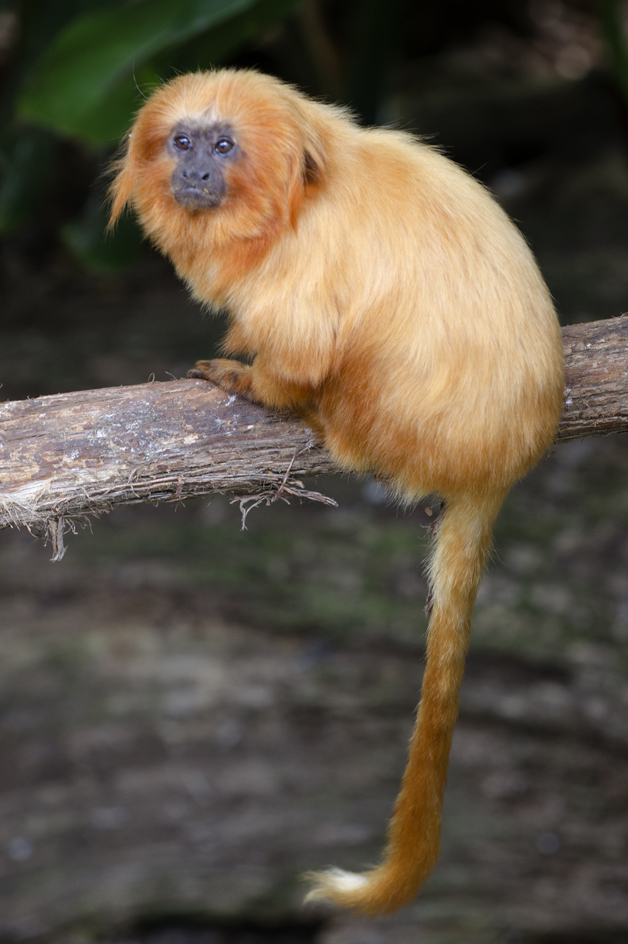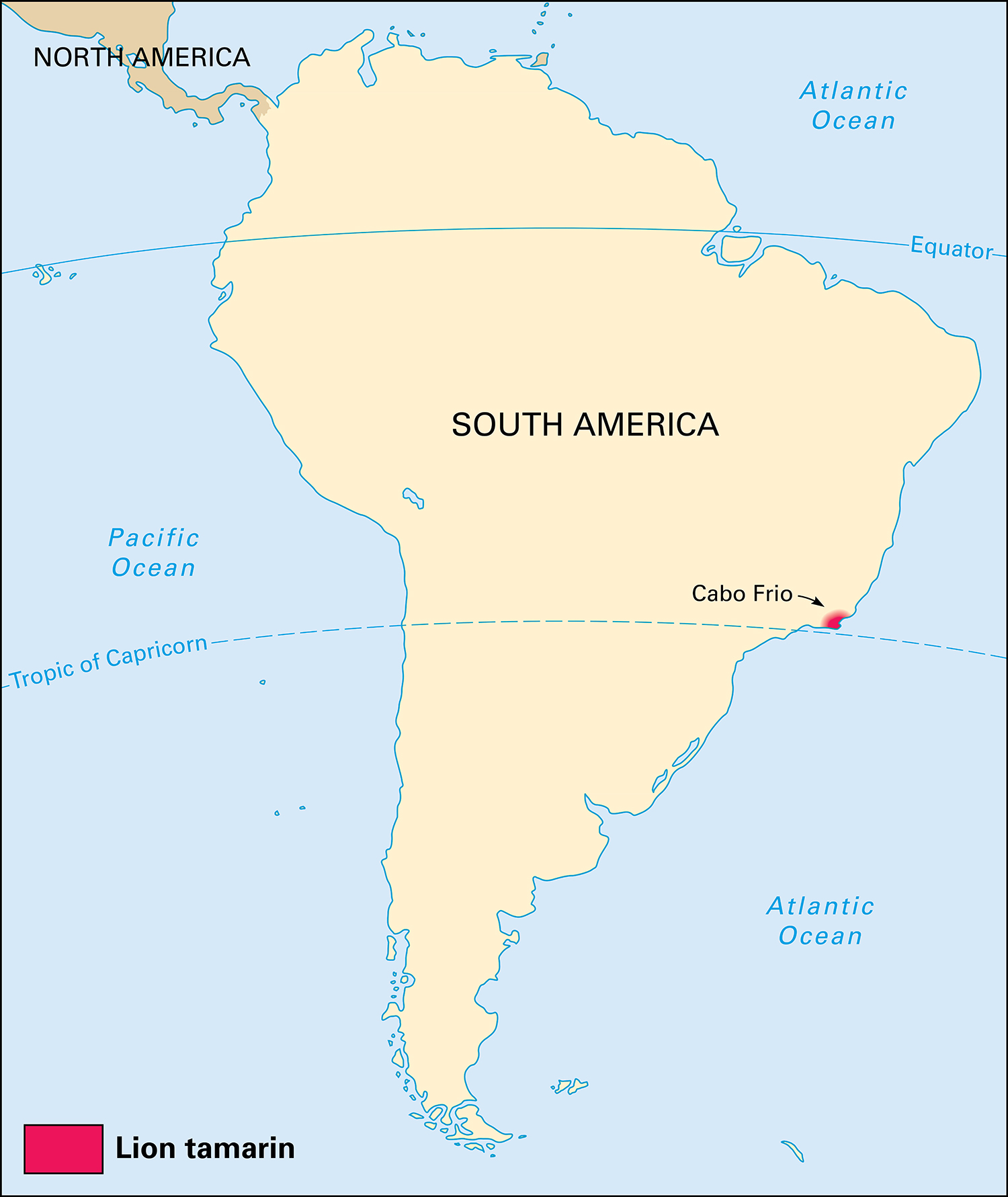Golden lion tamarin is a small South American monkey distinguished by its bright, fiery orange hair. The hair covers the tamarin’s body and tail. It forms a lionlike mane around the tamarin’s bare black face. An adult golden lion tamarin has a body about 7 to 10 inches (18 to 25 centimeters) long. Its tail is longer than its body, about 12 to 15 inches (30 to 38 centimeters) in length. Adults weigh about 11/2 pounds (0.7 kilogram).

Golden lion tamarins live in the Atlantic coastal rain forests of southeastern Brazil. They live in the forest canopy. At night, they sleep in hollows in the trees. By day, they forage for food among the tree branches, vines, and bromeliads of the canopy. They use their long, clawed fingers to cling to tree bark and to dig in crevices for food. Golden lion tamarins eat a variety of foods, including insects and other small invertebrates (animals without backbones), fruit, small vertebrates (animals with backbones) such as lizards, and bird eggs. Birds of prey, snakes, and such mammals as the coati and margay may prey on golden lion tamarins.

Golden lion tamarins live in family groups of perhaps two to eight members. The group includes a mating pair, young from one or two litters, and perhaps other relatives. Social activities include grooming and, among the young, play.
The tamarins mate in the warm, wet season, from September to March. Mothers carry the young in their bodies for 41/2 months. They tend to give birth to twins. The infants cling to the mother for two weeks, after which they are carried by the father. At about five weeks, the young begin exploring on their own. They nurse for 3 months and reach maturity at 11/2 to 2 years. They can live around 15 years in the wild.
Golden lion tamarins are endangered. The major threat to their survival is the clearing of their habitat for logging, agriculture, and human settlement.
